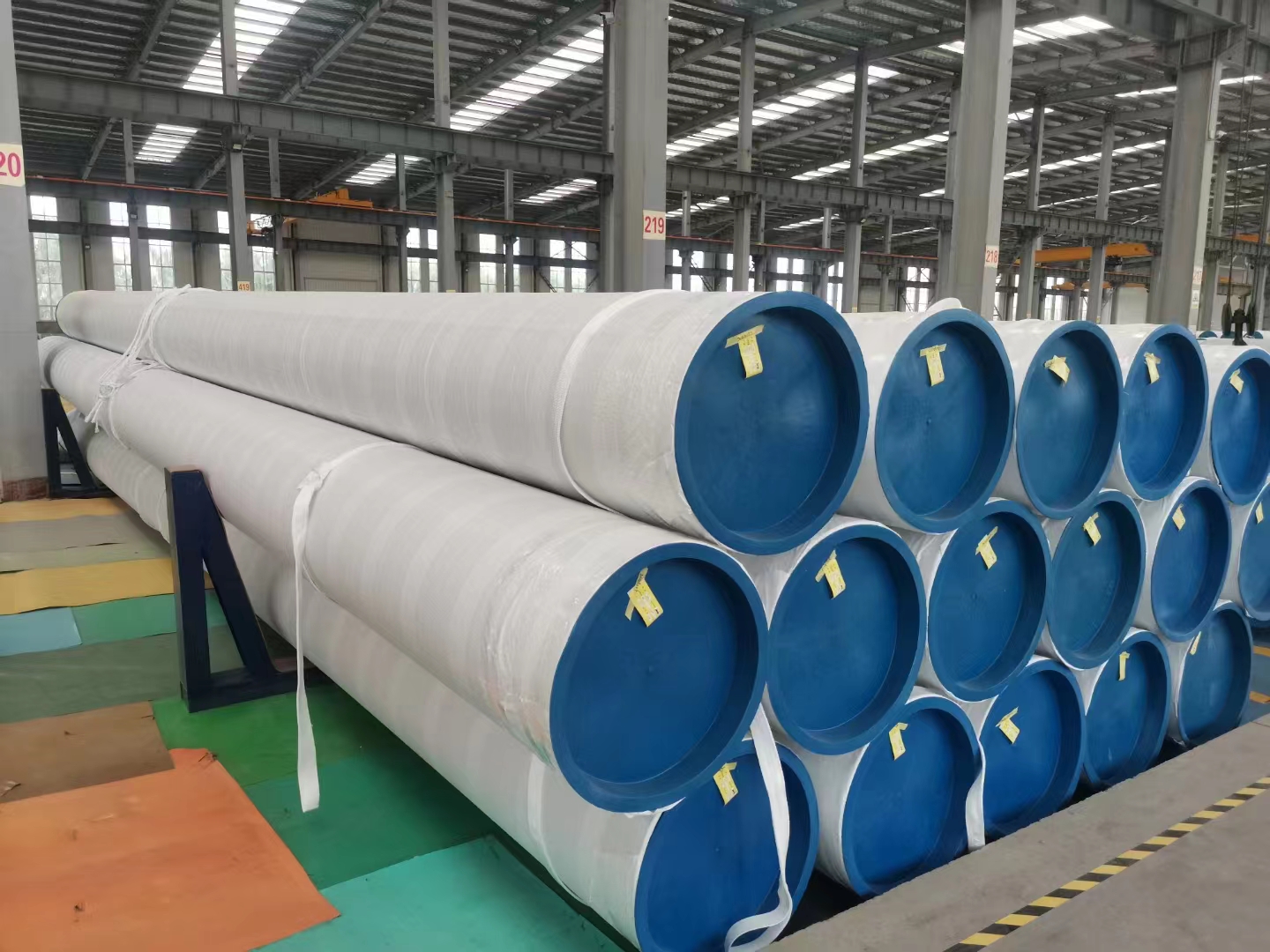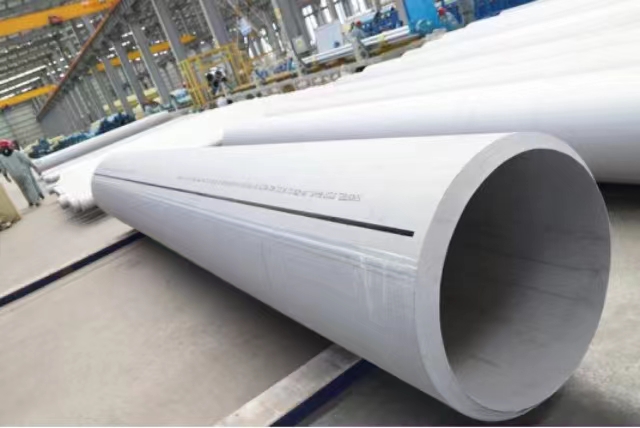
Have you ever wondered what makes stainless steel pipes stand out among other materials for piping solutions? In a world where durability, reliability, and performance are paramount, choosing the right pipe material can significantly impact your projects. Stainless steel is a popular choice in a variety of applications due to its exceptional strength, corrosion resistance, and versatility.
However, not all stainless steel pipes are created equal. Whether you're looking to install a piping system in an industrial plant, a residential building, or a specialized manufacturing facility, knowing how to select good stainless steel pipes is essential.
In this post, you'll learn how to identify quality stainless steel pipes, the factors that affect their performance, and the steps to take when selecting the right material for your project.
Types of Stainless Steel Pipes
Stainless steel pipes come in various grades and forms, each offering different properties suited to particular applications. When shopping for stainless steel pipes, it’s important to understand which type will work best for your needs. The most commonly used grades of stainless steel are found in the 300 series, specifically types 304 and 316. These are known for their excellent resistance to corrosion, making them ideal for harsh environments.
1. Austenitic Stainless Steel (Type 304, 316)
The most widely used stainless steel for pipes, austenitic stainless steel is non-magnetic and known for its high resistance to corrosion. Type 304 is ideal for food processing, pharmaceuticals, and architectural applications, while Type 316 is preferred for marine and chemical applications due to its added resistance to chlorides and chemicals.
2. Martensitic Stainless Steel (Type 410)
Martensitic stainless steels are magnetic and can be heat treated to achieve higher strength. These pipes are often used in applications that require high strength, such as in the manufacturing of valves, shafts, and pump parts.
3. Ferritic Stainless Steel (Type 430)
Ferritic stainless steels are magnetic and typically offer good resistance to corrosion at a lower cost. While not as corrosion-resistant as austenitic steels, they are often used in decorative or structural applications.
4. Duplex Stainless Steel (Type 2205)
A blend of austenitic and ferritic stainless steel, duplex stainless steel offers enhanced strength and resistance to stress corrosion cracking. This type of steel is ideal for applications involving extreme stress or highly corrosive environments.

What to Look for When Selecting Stainless Steel Pipes
Finding good stainless steel pipes involves considering several factors that affect the pipe's performance, longevity, and cost-effectiveness. Let’s explore what you should keep in mind:
1. Material Grade and Composition
The grade of stainless steel determines its resistance to corrosion, strength, and durability. The most common grades for piping are 304 and 316. If your application involves exposure to harsh chemicals or marine environments, 316 stainless steel is the better option due to its higher resistance to chloride corrosion. For less demanding environments, 304 is usually sufficient.
2. Pipe Type: Welded vs. Seamless
When selecting stainless steel pipes, you will need to decide between welded and seamless pipes.
Welded Pipes: These pipes are made by rolling a steel plate into a pipe and welding the edges. They are cost-effective and suitable for lower-pressure applications.
Seamless Pipes: These pipes are formed by piercing a solid billet of steel to create a hollow tube. Seamless pipes are stronger and more uniform, making them ideal for high-pressure systems and demanding applications.
3. Corrosion Resistance
The primary reason stainless steel is chosen over other materials is its superior resistance to corrosion. For environments exposed to chemicals, saltwater, or extreme temperatures, ensuring the right alloy composition and grade is essential to prevent material degradation.
For example, 316 stainless steel offers exceptional resistance to pitting and crevice corrosion, making it suitable for use in marine environments and chemical processing.
4. Strength and Durability
Depending on the application, the strength of the pipe may be a crucial factor. Seamless pipes are stronger than welded pipes, making them more durable and suitable for high-pressure and extreme temperature environments. However, welded pipes can still be used in applications where the pressure and temperature requirements are lower.
5. Pipe Size and Thickness
Stainless steel pipes come in various sizes and thicknesses, each suited to specific applications. The diameter and wall thickness of the pipe will impact its carrying capacity and resistance to pressure. When selecting a pipe, it’s important to calculate the expected flow rate and pressure to ensure the pipe can handle the demand. Larger diameter pipes are typically used for industrial purposes, while smaller pipes are suitable for residential applications.
6. Cost and Availability
While 304 and 316 stainless steel pipes offer high durability, they can be more expensive than other materials such as black steel or copper. However, stainless steel’s long lifespan and low maintenance costs make it a cost-effective solution in the long term. Be sure to compare suppliers to find the best balance between quality and price.
7. Supplier Reputation
When buying stainless steel pipes, choose a reputable supplier who can provide high-quality materials and offer expert advice. Check for certifications such as ISO 9001 to ensure that the supplier meets industry standards. Established suppliers can help guide you in selecting the appropriate grade, size, and type of pipe based on your specific needs.
How to Evaluate Stainless Steel Pipe Suppliers
Finding the right supplier is just as important as selecting the right stainless steel pipe. Here’s how you can evaluate suppliers to ensure you’re getting the best value:
1. Quality Assurance
Choose suppliers who offer quality control certifications such as ISO 9001. This ensures that the stainless steel pipes are manufactured according to international standards, providing consistent quality and performance.
2. Industry Experience
Look for suppliers with a proven track record and experience in supplying stainless steel pipes for your industry. They should be able to offer tailored recommendations based on your specific requirements.
3. Customer Reviews
Check customer reviews and testimonials to gauge the supplier’s reputation. Reliable suppliers will have a history of positive feedback regarding their products and services.
4. Customer Support
A good supplier will provide excellent customer service, offering technical support to help you make informed decisions. They should be able to assist with product specifications, installation guidelines, and after-sales support.
Applications of Stainless Steel Pipes
Stainless steel pipes are widely used across various industries due to their durability and corrosion resistance. Some of the most common applications include:
Food and Beverage Industry: Stainless steel pipes are used to transport food products, as they are non-reactive and easy to clean.
Oil and Gas: Used for transporting liquids and gases in the extraction and refining process.
Chemical Manufacturing: Stainless steel is resistant to corrosion and chemical degradation, making it ideal for transporting hazardous chemicals.
Water Treatment: Stainless steel pipes are used in water purification plants due to their resistance to corrosion from chlorine and other chemicals.
Pharmaceuticals: Stainless steel is used in pharmaceutical manufacturing for its hygienic properties and resistance to contamination.
Conclusion
Finding the right stainless steel pipes for your project is a vital decision that can impact the longevity and performance of your systems. By considering factors such as material grade, pipe type, corrosion resistance, and supplier reputation, you can make an informed choice that meets your specific needs. Always work with trusted suppliers to ensure high-quality products that will perform well in the long run.
If you're in need of reliable and durable stainless steel pipes, WEIHENG offers high-quality solutions tailored to your needs. Their expertise in the industry ensures you get the best products for your project.
FAQ
Q: What are the different types of stainless steel pipes?
A: The main types of stainless steel pipes are welded and seamless, with seamless pipes offering greater strength and uniformity for high-pressure applications.
Q: How do I choose the right stainless steel pipe for my project?
A: Consider factors like the material grade, pipe type, environmental conditions, pressure, and flow requirements to ensure you choose the best pipe.
Q: Can stainless steel pipes resist corrosion in marine environments?
A: Yes, 316 stainless steel pipes offer superior resistance to corrosion in marine environments due to their higher resistance to chlorides.
Q: Are stainless steel pipes suitable for high-pressure applications?
A: Yes, seamless stainless steel pipes are ideal for high-pressure applications due to their strength and uniformity.
Q: Why is stainless steel expensive compared to other materials?
A: Stainless steel is more expensive due to the cost of alloying materials like chromium and nickel, as well as the complex manufacturing process. However, its durability and low maintenance make it a cost-effective solution over time.





















